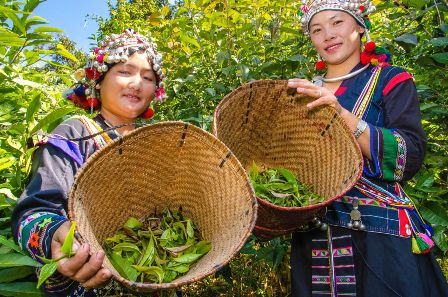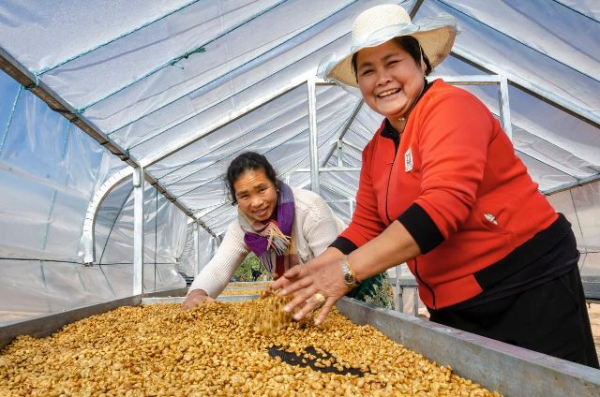KPL
(KPL) Coffee and tea, undeniably, are universally popular drinks enjoyed and celebrated in many cultures.
More than 2 billion cups of coffee are consumed every day worldwide, generating a turnover of around USD 200 billion per year. A total of 5 billion cups of tea are consumed worldwide each day, and the global tea market is estimated to be worth USD 51.6 billion in 2023.

(KPL) Coffee and tea, undeniably, are universally popular drinks enjoyed and celebrated in many cultures.
More than 2 billion cups of coffee are consumed every day worldwide, generating a turnover of around USD 200 billion per year. A total of 5 billion cups of tea are consumed worldwide each day, and the global tea market is estimated to be worth USD 51.6 billion in 2023.
In the Lao People’s Democratic Republic (PDR), a mountainous country located in the heart of Southeast Asia, coffee and tea are more than just popular drinks. They also tell the success story behind the long-standing cooperation between France and the the Lao PDR, generating income for farmers and improving their livelihoods.
A journey of Lao coffee and tea that fills your cup! From the South to the North of the Lao PDR, you are welcomed by a dizzying array of coffee shops serving local and international coffee and tea.
While coffee was introduced by the French in the 19th century, Northern Lao PDR is home to an endemic tea variety, known as «Camellia Sinensis».

This evergreen is highly sought-after and appreciated for its quality and can be found in single stemmed trees up to 20 meters tall in Lao forests. Recognizing coffee and tea value as contributors to the country’s economic growth, the Lao government and development partners have been working together for the last decade to improve production, quality and market access for Lao coffee and tea.
Today, coffee and tea contribute to the economic development of the Lao PDR with an export value of nearly USD200 million per year, making Lao coffee and tea the 34th and 63rd world exporters, respectively.
Way forward: At a time when new promising markets are emerging thanks to a fast-growing global demand for “Premium” Arabica coffee and “Higher-quality” tea, Lao producers and local stakeholders must fully leverage their competitiveness.
From the volcanic plateau of Bolaven in the South to the misty mountain climate in the North of the Lao PDR, each terroir has its own unique geology, climate and ecosystem in favor to produce high-quality coffee and tea to meet global market trends.
However, coffee and tea still face challenges to become profitable businesses and delaying in sector consolidation: threats to resources as a result of recurring climate change events and brooming of cash crops, varying quality and productivity, a lack of reliable operators and governance, fluctuating income along the value chain due to unpredictable market price and a lack of regulation of trade practices. Additionally, a shortage of skilled workers has hindered the full realization of the industry’s potential.
About Green CUP Project: The project, one of two flagship projects under the umbrella of “Global Gateway Team Europe Partnership with the Lao PDR to increase sustainable and inclusive Trade, Investment and Connectivity in the Agriculture and Forestry sectors – TICAF programme” launched on March 14, 2024.
Green CUP seeks to bolster trade and investment in the green economy for coffee and tea sectors through agro-ecological community-based action, climate-resilient and inclusive value chains, and access to sustainable and high-value markets, notably European market.
KPL